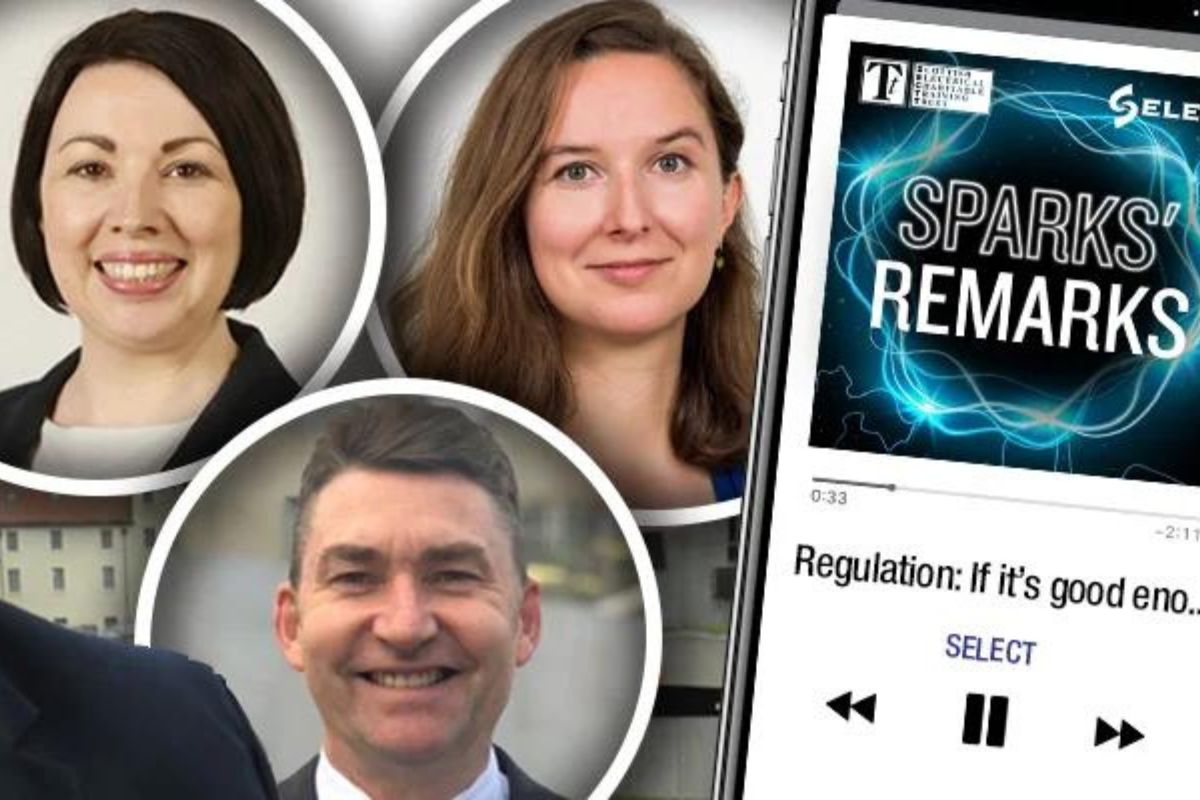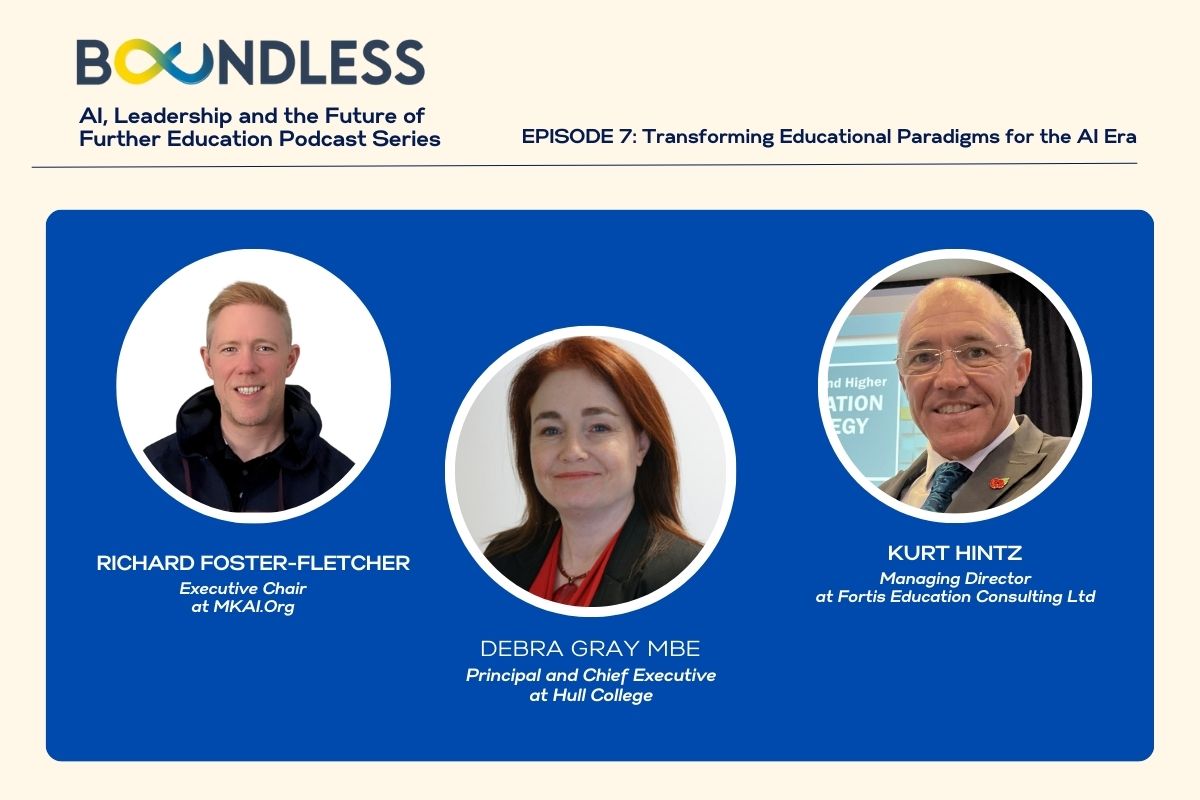Successful Interviewing Skills With Arnie Skelton #45

Top Ten Tips for Teachers and #FE Managers
In the Forty-Second episode of his podcast Top Ten Tips for Teachers and FE Managers, Arnie Skelton discusses interviewing skills.
In this week’s podcast, Arnie takes us through his top ten tips on interviewing skills.
For example, how to bridge, how to turn negatives into positives, and how to be prepared for that inevitable question: “is there anything you’d like to ask us?”
Arnies Top 10 Tips on interviewing
Tip number one, prepare.
Now, that’s a really obvious thing to say, but one or two points about that. It’s really important, especially if you’re not from within that organization to have a look at that organization’s website. It will contain useful information, information that they will expect you to have looked at and know the answers to rather than ask questions in the interview itself.
So you need to look at that for that purpose and also to see what’s hot. Issues that are particularly current and relevant to that organization are likely to have become prominent on that website. It just gives you a sense of the flavor and the culture and possibly some key information, such as corporate values. So it’s really important to do the preparation around that their website.
Tip number two, prepare your own asset set.
This is something I strongly recommend as an ongoing thing, not for any one interview, but for your career in general.
You need a spreadsheet or an equivalent and you’re going to have four columns.
KSAE Set |
|||
| Knowledge | Evidence | Gap | Action |
| Skills | |||
| Attributes | |||
| Experience | |||
The first one is K S A E set and I’ll explain each of those in a moment. But that’s column one KSAE. Then column two is evidence, the heading is evidence. Column three is Gap, and column four is action. And the essential flow of the spreadsheet is that KSAE stands for knowledge, skills, attributes and experience. So you perhaps want subheadings in column one for those four terms, knowledge, skills, attributes and experience. And the first job that you apply for using this spreadsheet, you jot down all the things on the job description and in the person specification that they seem to want you to know. So write down the things they want you to know under knowledge. Drop down a bit and do the same for skills. What are the skills they expect you to have then? Underneath that, anything they’ve asked for in terms of attributes like stamina, good health, hold clean driving licence, would be prepared to work unsociable hours, that kind of thing. And then underneath that experience. So KSAE knowledge, skills, attributes and experience and write down what it is they want. And then of course, the second column is your evidence to show that you have those things to the extent you have them. So in column two, you write your evidence against each of those entries under knowledge, skills, attributes and experience. And of course, there may be some of the entries in column one that you don’t feel equipped for, you don’t have the evidence for.
And so you need to put a cross in the column called Gap, which simply identifies where you have gaps in your ability to apply successfully or thoroughly for that role. And of course, wherever there’s a cross in column three, you should put something in column four, which is the action you’re going to take to close the gap. Now, as you go through your career and move from job to job and apply for more jobs, possibly, then you’re going to get you keep adding to the KSAE. Every time a new job comes along, you’ll look in the job description and the person specification and you add to column one, any new knowledge acquired any new skills required, any new attributes required, any new experience required, and keep adding to the evidence that you have for each of those four. And of course, through your jobs, generally, as you acquire new experiences, new skills, new events, then add to the evidence column, keep building the evidence column. I’m suggesting you look at this spreadsheet once a week to see if there’s anything you’ve done this week that produces new evidence for any of the KSAE you have. And you can imagine over time this becomes a really powerful document warehouse, really. Of all the things you feel you’ve got experience of and can produce the evidence for against a wide range of KSAEs and therefore as a new job comes along it’s relatively easy to put into your job application things that you just draw down from the spreadsheet. You don’t have to think of them afresh, they’re there sat waiting for you. And of course, because you’ve been adding to this list pretty much every week, should you get an interview and they ask for your experience? It’s pretty much embedded within you because you’ve become familiar with it over the years by simply adding to this spreadsheet. Really powerful tool. People who’ve used it tell me it’s one of the best things they’ve ever done. So I’m really recommending that as tip number two, create your KSAE spreadsheet.
Tip number three, do the 100 questions.
This is gonna sound ridiculous, but it’s absolutely brilliant. Look at the person specification and highlight with a highlight a pen every time there is a verb. So it may well be that the key duty or responsibility is to lead or to manage or to create. And those verbs all could form a question. So it could be: How would you lead? How would you manage? How would you create? And you don’t have to write these down. But everything that’s a verb, create a question from. And I reckon you’ll have between 80 and a hundred questions if you do this thoroughly on each person spec and a job description. You’ll get up to between 80 and 100 questions. And to be fair, they could ask you any of those questions because they’ll be pertinent to the job description and person spec. Now, I’m not going to ask you to answer those 80 or so questions. You should frame them in your head and then give yourself a tick. Question mark or cross, depending on your response. Give yourself a tick and perhaps count these if you think, Yep, if I was ask that question now, I could answer it fairly convincingly. That’s a tick. A question mark is I get the question, but I’d probably like to do a bit of research if the question was asked me now. So that’s something I perhaps need to think about a little more. And a cross is I haven’t a clue, I haven’t a clue how to answer that question if that came up. So I really need to do some research on that. My guess is that if you are right for the job you’re applying, you’ll get 75 to 80 percent of your responses as ticks. That’s my norm. Seventy / eighty percent. That’s reassuring. It means that looking across the whole job description in person specification across all of the questions they could ask you, relevant to the job, you can answer more than three quarters of them easily. And then if you if let’s say what, eighty percent is ticks before we get another 10, maybe even 15 percent as question marks. There are very few absolute no no’s. So I’m asking you to do this what I call 100 questions exercise, just to reassure yourself that you’re on top of your game, that you do know enough about the job, and where you don’t you’ve got early warning as to where you need to do some follow up research. That’s tip number three. Do the 100 questions.
Tip number four, take notes in.
Again, potentially controversial. And you may want to check this in advance. There’s no harm in phoning the admin people and saying how would this sit? But I would encourage you to take notes. Now, if you think notes are an absolute no, no, that’s fine, but if you’re the kind of person that hates the idea of having to remember things, some important facts or figures, then take them in, take them in on note paper. Two reasons. The first one is it’s a bit like a comfort blanket. If you don’t have these to hand you, you worry and your memory will let you down. If you have them to hand, the chances are you’ll never look at them. You’ll remember them because they’re just there. And the second reason is if somebody says to you or you say, is OK if I use some notes and they say yes. Most people usually rely on memory or whatever you say “Yes, But I regard this as an important meeting. And I would go to any important meeting, well prepared with some notes. Memory is fallible. I’d rather rely on notes”. I think that’s impressive. I would certainly give somebody credit for taking notes and explaining why. So my suggestion is take notes, take notes in as tip 4.
Tip number five, think about taking in a portfolio of evidence.
You know, artists do this, don’t they? So why not take in your own portfolio, especially if there’s something quite obvious. If you’re in the business of PR or writing or any anything really, that that’s a product, it’s the end result of something you work on, then put it in your portfolio. You don’t have to use it. But if they say do you have any evidence of that? Do you? Can you provide an example of that? There it is. And again, it looks like you’ve prepared. Looks like you’ve anticipated those sorts of questions and have come prepared. And even if somebody says that was in that little case, you can say it’s portfolio of evidence. They may never ask you to show it. They may never see it, but it will have gone into their their minds that here’s somebody who’s prepared and perhaps stands out a bit more from the rest.
Tip number six, answer the question.
I know that sounds such an obvious thing to say, but in the heat of the moment, you can just get carried away and start talking, tend to the doesn’t and drift off track. And they’re looking at you as if to say this all. That’s very, very good. But what’s your answer? So please make sure you answer the question. Okay.
Tip number seven, convert any negatives to a positive.
Never leave the interviewers with a negative conclusion. If, for example, they ask you a question and you don’t know the answer, say, well, I don’t know. But I would know how to find out. And as a positive, they may follow up by saying, well, how would you find out? Which is fair enough. So give them the answer. But there’s much more of a positive, too. I know how to get it. And you can even volunteer to get it. You can say I could probably find the answer to that in a half an hour. So would you allow me to send it in after the interview? Possibly. Cheeky. But again, we’ll make you stand out and be a bit more memorable if they ask you, can you do something? And you can’t. Haven’t got that skill. You can say, no, I don’t have that skill. But I am a quick learner. I don’t find it difficult learning things afresh. Again, they may follow up and say, well, can you give an example of something you’ve done recently that’s helped you acquire new skills? So you have to have the answer for that. But don’t say no, I don’t know. And no, I can’t do and leave it at that. Follow through with. Yes, I know how to find out and I could learn fairly quickly. So always finish on a positive, not a negative.
Tip number eight, bridging.
Possibly one of my favorites and one that can let so many people down. And I’m gonna call it bridging, bridging. They are looking to recruit somebody for this new job. For you, it’s the future. It’s a future job, but so often candidates talk about their current job or their previous jobs. And sometimes that’s inevitable because that’s the only experience or evidence you have of your past job or your present job. That’s fine. But you must, must, must Bridge it into the new job. You must carry the past and present experience to show how that helps you in the future job. That’s called bridging. Take your past or current experience and Bridge it into the kind of the job you’re applying for. And you could do that at the front end or the back end. So you could say the job that I’m applying for. Requires the following qualities. And whilst I’ve been working on X, Y and Z, those are the kind of things I’ve been dealing with and really enjoyed. So you take. You start with the future requirement and bridge back to your job. Showing how what’s being looked for is currently what you’re doing or the other way around. I’ve had plenty of experience of this and this and this. And here’s my examples. And I know those are three of the things in the job description that you’ll be looking for. You absolutely must make it easy for the panel.
I was once some hope the person isn’t listening. No names, but as well as giving a no win, no fee support to somebody who was wanting to apply for a job as outreach officer in just the city council and the Education Department, and he currently was an archaeologist working on the files. And I asked him questions about how he was going to, you know, show he was worthy of this job in in Chester. And he said, I’ve no idea. But I can tell you what I do in dealing with Roman shards on the file peninsular.
And I was thinking, I got I mean, I’ve got to do the work here and try and connect what you’re talking about as an archaeologist into how that’s going to help you be an outreach worker. It’s too much like hard work. I’m just not prepared to do that as a panelist. You must make the connection, not leave it to them. So always bridge your experience past and present to show how it serves and reinforces the requirements of the future job as tip number eight.
Tip number nine is to have a sensible response to the inevitable question they will ask you, which is have you anything you’d like to ask us?
Make sure isn’t enough. And by that, I mean it isn’t something that you could have found out in advance of the interview by phoning up or by looking on the Web site. There shouldn’t be anything you ask about terms and conditions. You should have dealt with all of that beforehand. My personal recommend is that you have something and probably three things because they may well have come up to or two of them may have come up in the in the interview. So you need a number of these, which is something they are unlikely to ask you about. But you think is a personal asset, which if they knew about. They would value. So I will often when I’m pitching for work, if they ask that question, I’ll say. Would you say you have a coaching culture here? And they almost inevitably say, well, can you say a little bit more kick? Why do you ask that question? And that gives me about 30 seconds to make a pitch for something I think I do quite a good job of. So I’m I’m now positioning myself as a coach. They haven’t asked me about that. But when they review my. Portfolio, if you like, against the candidates, some of them may think. And, of course, you know, he’d be good for coaching. Now, that wasn’t on the portfolio of questions. It wasn’t something they asked me about, but nonetheless put it in their mind. So tip number nine is think about maybe a topic which you would like to give a mini pitch on as and form it into a question which they will then probe and say, could you say a bit more about that? And then you’re off giving some advice on how you might do that. But don’t how that particular asset of yours might help in the job.
And then tip number 10 and it say it’s the biggest one of all really interviews.
The word itself can be quite scary. You can’t get intimidated. You can get nervous. I understand all of that. I’d like you to consider reframing the idea of an interview into an intelligent conversation. And if you could think about what’s coming up as an intelligent conversation, surely you can handle that. You can have those things everyday.
People tell me in an interview they get a brain freeze or a panic attack. But in normal, everyday life, in an intelligent conversations, you tend not to get brain freezes or panic attacks. It’s the context. It’s the setting called interview that does the damage. Ignore the fact that it’s an interview. It is actually meant to be an intelligent conversation between the panel and yourself. And if you can relax into that and say, well, if that’s what it is, an intelligent conversation, I can I can do that. And if you chunked down an interview into its basic component parts, you know, you. You say hello, you establish some initial rapport. You listen to their question, you think about it, you answer it, kind of thing goes on every day. So my tip number 10 is reframe interviewing into intelligent conversations. It may give you the confidence you need.
So that’s my top 10, just to quickly recap them.
- Tip number one, prepare particularly looking at and and making sense of their website.
- Tip number two, use the KSAE spreadsheet.
- Tip number three, go through the 100 questions exercise.
- Tip number four, taken notes of some vital and important information that you don’t want to commit to memory.
- Tip number five. Think about taking in a portfolio as evidence of the work you’ve done.
- Tip number six, make sure you answer the question.
- Tip number seven, always convert a negative into a positive tip.
- Number eight, bridge your past and present experience into the future role.
- Tip number nine, have a sensible response to their question of is there anything you’d like to ask us?
- And tip number 10, reframe interview into intelligent conversation.
Arnie has spent the last 30 years working in a wide range of organisations, and all his tips are totally practical, and can be implemented by anyone, any time, at no financial cost.
Arnie Skelton, Managing Director, Effective Training & Development Ltd







Responses